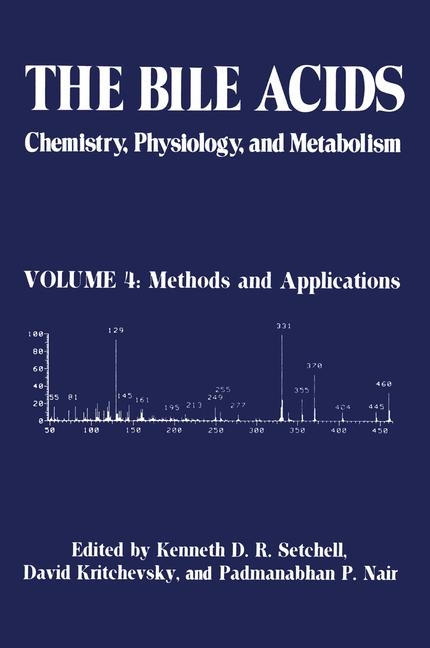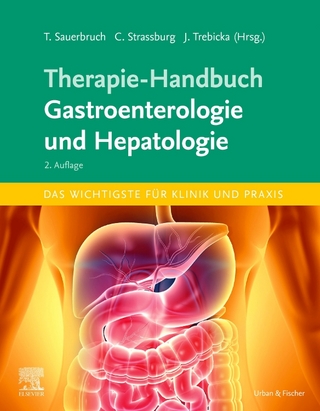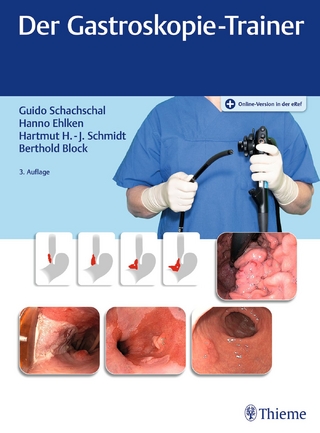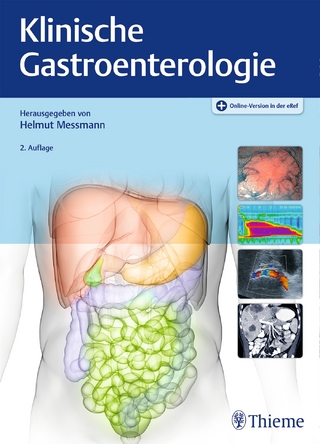
The Bile Acids: Chemistry, Physiology, and Metabolism
Kluwer Academic/Plenum Publishers (Verlag)
978-0-306-42622-3 (ISBN)
- Titel ist leider vergriffen;
keine Neuauflage - Artikel merken
1 Techniques for Extraction and Group Separation of Bile Acids.- 1. Introduction.- 2. Extraction.- 2.1. Solvent Extraction.- 2.2. Solid-Phase Extraction.- 3. Purification and Group Separation.- 3. 1. Adsorption Chromatography.- 3.2. Partition Chromatography.- 3.3. Electrophoresis.- 3.4. IonExchange.- 4. Hydrolysis and Solvolysis.- 4.1. Alkaline Hydrolysis.- 4.2. Cholylglycine Hydrolase.- 4.3. ?-Glucuronidase.- 4.4. Solvolysis.- 4.5. Esterification.- 5. Conclusions.- References.- 2 High-Performance Liquid Chromatography.- 1. Introduction.- 2. Chromatographic Behavior of Bile Acids.- 2.1. Unconjugated, Glycine-, and Taurine-Conjugated Bile Acids.- 2.2. Bile Acid Sulfates and Glucuronides.- 3. Detection Methods.- 3.1. Direct Determination.- 3.2. Coupling with Enzymic Reaction.- 3.3. Derivatization of Carboxyl and Hydroxyl Groups.- 4. Application of HPLC to Biological Specimens.- 4.1. Direct Determination.- 4.2. Derivatization Methods.- 5. Conclusions.- References.- 3 Nuclear Magnetic Resonance.- 1. Introduction: Why Use NMR for Bile Acids?.- 2. Basic Principles of NMR.- 2.1. The NMR Phenomenon.- 2.2. Chemical Shift.- 2.3. Peak Integrals.- 2.4. Multiplicities of Signals: Spin Coupling.- 2.5. 13C-1H Coupling.- 2.6. Preparation of Samples for NMR.- 3. Proton NMR of Bile Acids.- 3.1. Introduction.- 3.2. Methyl Proton Resonances.- 3.3. Solvent Effects.- 3.4. Derivatives of Bile Acids.- 3.5. Spin Coupling: Splitting of Proton Signals.- 4. 13C NMR of Bile Acids.- 5. Recent Advances in NMR Spectroscopy.- 5.1. Superconducting Magnets.- 5.2. Fourier-Transform NMR.- 5.3. Spin Decoupling.- 5.4. Nuclear Overhauser Effect Experiments.- 5.5. Relaxation.- 5.6. Paramagnetic Shift Reagents.- 5.7. Pulse Sequences.- 6. Application of NMR to the Physical Chemistry of Bile Acids.- 7. NMR in the Biosynthesis and Metabolism of Bile Acids.- 8. ConclUding Remarks.- References.- 4 X-Ray Crystallography.- l. Introduction.- 2. X-Ray Diffraction by Single Crystals.- 3. Sample Preparation.- 4. Experimental Measurements.- 5. Structure Determination.- 6. Interpretation of Results.- 7. Pitfalls.- 8. Examples.- References.- 5 Mass Spectrometry of Bile Acids.- 1. Introduction.- 2. Principles and Instrumentation.- 2.1. Ion Separation.- 2.2. Ion Detection.- 2.3. Ion Recording.- 3. Ionization Methods.- 3.1. Electron Impact.- 3.2. Chemical Ionization.- 3.3. Field and Laser Desorption.- 3.4. Fast Atom Bombardment.- 4. Methods of Sample Introduction.- 4. 1. Direct Insertion Probe.- 4.2. Gas Chromatographic Inlet.- 4.3. Liquid Chromatographic Inlet.- 5. Mass Spectrometric Fragmentation of Bile Acids.- 5.1. Monohydroxy Bile Acids.- 5.2. Dihydroxy Bile Acids.- 5.3. Trihydroxy Bile Acids.- 5.4. Tetrahydroxy Bile Acids.- 5.5. Oxo Bile Acids.- 5.6. Unsaturated Bile Acids.- 5.7. Modified Side-Chain Bile Acids.- 5.8. Conjugated Bile Acids.- 6. Quantitative Analysis of Bile Acids.- 7. Bile Acids Labeled with Stable Isotopes.- 8. Application of Mass Spectrometry to the Determination of Bile Acids in Biological Fluids.- 8. 1. Serum.- 8.2. Bile.- 8.3. Feces.- 8.4. Meconium.- 8.5. Amniotic Fluid.- 8.6. Urine.- 8.7. Tissue.- 9. Compendium of Mass Spectra of Bile Acids.- References.- 6 Immunological Methods for Serum Bile Acid Analysis.- 1. Introduction.- 2. Physicochemical State of Bile Acids in Serum.- 3. Immunoassay.- 4. Preparation of Antigenic Bile Acids.- 5. Antibodies.- 5.1. Antibody Characterization: Titer and Affinity.- 5.2. Specificity.- 6. Labeled Bile Acids.- 7. Assay Procedure.- 8. Comparison of Methods.- 9. Comparison between Methods.- 10. Enzyme Immunoassay.- 11. Serum Bile Acids in Physiology and Pathology.- 11.1. Serum Bile Acids as a Mirror of the Enterohepatic Circulation.- 11.2. Determinants of Serum Bile Acid Levels.- 11.3. Serum Bile Acids in Hepatobiliary Disease.- 11.4. Diagnostic Accuracy.- 11.5. Modalities of Serum Bile Acid Detennination.- 11.6. Serum Bile Acids in Bile Acid Malabsorption Syndromes.- 11.7. Serum Bile Acid Levels in Infancy and Childhood.- References.- 7 Bioluminescence Assays Using Immobilized Enzymes in Bile Acid Analysis.- 1. Introduction.- 2. Bioluminescence Assays.- 2.1. Principles.- 2.2. Coimmobilized Enzymes.- 3. Material.- 3. 1. Enzymes.- 3.2. Bile Acids.- 3.3. Samples.- 3.4. Instruments.- 4. Methods.- 4.1. Enzyme Immobilization.- 4.2. Continuous-Flow Systems.- 4.3. Assay Techniques.- 4.4. Standard Curves.- 4.5. Assay Specificity.- 4.6. Stability.- 4.7. Sample Preparation.- 4.8. Recovery and Precision.- 4.9. Calculations.- 4.10. Assay Validations.- 5. Results.- 5.1. Standards.- 5.2. Validation.- 5.3. Some Applications.- 6. Discussion.- 6.1. The Method.- 6.2. Clinical Applications.- 6.3. Experimental Applications.- 7. Summary.- References.- 8 Bile Acids in Extrahepatic Tissues.- 1. Introduction.- 2. Analytical Methods.- 2.1. Chemicals.- 2.2. Extraction Method I.- 2.3. Extraction Method II.- 2.4. Removal of Fatty Acids.- 2.5. TLC Separation of Bile Acids into Groups.- 2.6. TLC Identification of Bile Acids.- 2.7. High-Pressure Liquid Chromatography.- 2.8. Mass Spectrometry.- 2.9. Cholesterol 7?-Hydroxylase and Hydroxymethylglutaryl-CoA Reductase.- 2.10. Lipid Quantitation.- 2.11. Enzymatic Assay of Total Bile Acids.- 2.12. Plasma Lipoprotein Separation.- 2.13. Tissue Collection.- 2.14. Experimental Designs.- 3. Applications.- 3. 1. Identification and Quantitation of Cholanoic Acids.- 3.2. Human Study.- 3.3. Steroid Kinetics in Rats.- 4. Conclusions.- References.- 9 Tissue-Bound Bile Acids.- 1. Introduction.- 2. Methodology.- 2.1. Isolation Procedures.- 2.2. Enzymatic Cleavage of TBL.- 2.3. Isolation of N-?-Lithocholyl Lysine from Tissues by Nonenzymatic Hydrolysis.- References.- 10 Serum Bile Acids.- 1. Introduction.- 2. Serum Bile Acids and the Different Enterohepatic Bile Acid Cycles in Normal Humans.- 2.1. Bile Acid Distribution.- 2.2. Absorption of Bile Acids from the Intestine into the Portal Blood.- 2.3. Bile Acids in the Portal Blood.- 2.4. Hepatic Extraction from the Portal Vein.- 2.5. Hepatic Uptake of Bile Acids from the Systemic Circulation.- 2.6. Compartmental Models and Peripheral Bile Acid Concentrations.- 3. Serum Bile Acid Measurements and the Dynamics of the Normal Enterohepatic Circulations.- 3.1. Radioimmunoassay.- 3.2. Gas-Liquid Chromatography/Mass Spectrometry.- 3.3. High-Pressure Liquid Chromatography.- 3.4. Unconjugated Serum Bile Acid Concentrations.- 3.5. Protein-Bound Serum Bile Acid Concentrations.- 4. Serum Bile Acids and Liver Disease.- 4.1. Total 3a-Hydroxy Bile Acid Concentrations.- 4.2. The Specificity of Serum Bile Acid Measurements for Liver Disease.- 4.3. Elevated Peripheral Bile Acid Concentrations in Liver Cirrhosis.- 4.4. Serum Bile Acid Hydroxylation Patterns in Liver Disease.- 5. Gas Chromatography-Mass Spectrometry and Monohydroxy Bile Acids in Liver Disease.- 6. Serum Bile Acid Composition in Other Circumstances.- 6.1. Serum Bile Acids during Bile Acid Feeding.- 6.2. Serum Bile Acids during Pregnancy.- 7. Conclusion.- References.- 11 Urinary Bile Acids.- 1. Introduction.- 2. Methodology.- 2.1. Liquid-Liquid Extraction.- 2.2. Liquid-Solid Extraction.- 2.3. Separation into Subclasses.- 3. Bile Acids Detected in the Urine.- 3.1. Bile Acid Groups.- 3.2. Bile Acid Pattern in the Urine of Healthy Adults.- 3.3. Bile Acids in the Urine of the Newborn.- 3.4. Urinary Bile Acids in Hepatobiliary Diseases.- 3.5. Other Diseases Associated with Alterations in Urinary Bile Acid Excretion.- 4. Origin of the Atypical Bile Acids in the Urine.- 4.1. Conjugation Reactions.- 4.2. Atypical Hydroxylations.- 4.3. Alterations of the Side Chain.- 4.4. Epimerizations.- 4.5. Unsaturated Bile Acids.- 5. The Renal Clearance of Bile Acids.- 6. Conclusion.- References.- 12 Fecal Bile Acids.- 1. Introduction.- 2. Methods for Determination of Fecal Bile Acids.- 2.1. Early Techniques.- 2.2. Techniques Based on Gas-Liquid Chromatography.- 2.3. Gas-Liquid Chromatography-Mass Spectrometry.- 2.4. Enzymatic Methods.- 2.5. High-Pressure Liquid Chromatography Analysis.- 2.6. Isotopic Methods.- 2.7. General Problems in Fecal Bile Acid Analysis.- 3. Fecal Bile Acid Excretion in Health.- 3.1. Normal Patterns of Fecal Bile Acid Excretion in Adults.- 3.2. Bile Acids in Children and Infants.- 3.3. Meconium.- 3.4. Factors Influencing Bile Acid Excretion.- 4. Fecal Bile Acid Excretion in Disease.- 4.1. Colon Cancer.- 4.2. Adenomatous Polyps.- 4.3. Familial Polyposis.- 4.4. Ulcerative Colitis.- 4.5. Breast Cancer.- 4.6. Crohn’s Disease.- 4.7. Diverticulosis.- 4.8. Diarrhea and Malabsorption.- 4.9. Ileostomy and Ileal Resection.- 4.10. Inborn Errors of Metabolism Involving Bile Acid Metabolism.- 4.11. Hyperlipidemia.- 4.12. Liver Disease.- 4.13. Cholelithiasis.- 4.14. Diabetes.- 5. Effect of Diet and Drugs on Fecal Bile Acid Excretion.- 5.1. Dietary Fiber.- 5.2. Bile Acid Sequestrants.- 5.3. Antibiotics.- 5.4. Dietary Factors Influencing Bile Acid Metabolism.- 5.5. Absorbable Hypolipidemic Drugs.- 5.6. Exogenous Bile Acid Therapy.- 6. Conclusions.- References.
| Erscheint lt. Verlag | 30.6.1988 |
|---|---|
| Zusatzinfo | 604 p. |
| Verlagsort | New York |
| Sprache | englisch |
| Gewicht | 1009 g |
| Themenwelt | Medizinische Fachgebiete ► Innere Medizin ► Gastroenterologie |
| Medizinische Fachgebiete ► Innere Medizin ► Hepatologie | |
| Naturwissenschaften ► Biologie ► Biochemie | |
| ISBN-10 | 0-306-42622-6 / 0306426226 |
| ISBN-13 | 978-0-306-42622-3 / 9780306426223 |
| Zustand | Neuware |
| Haben Sie eine Frage zum Produkt? |
aus dem Bereich


